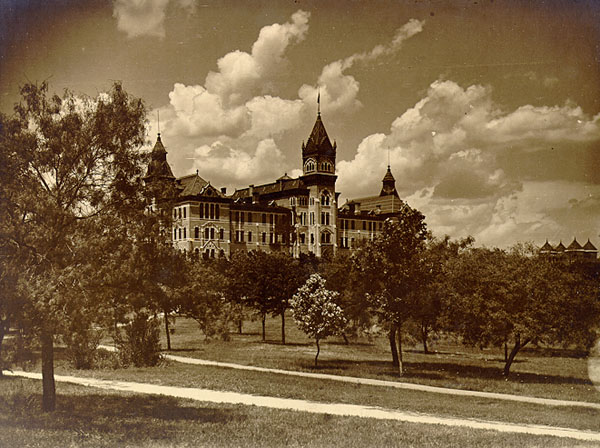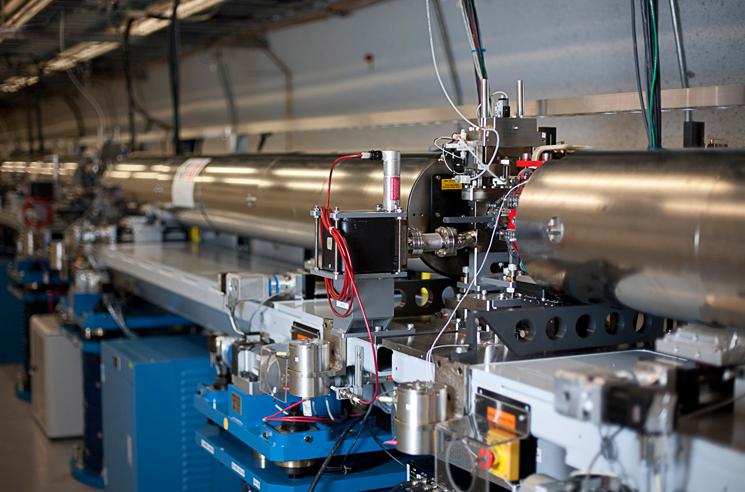|
Joe Polchinski
Joseph Gerard Polchinski Jr. (; May 16, 1954 – February 2, 2018) was an American theoretical physicist and string theorist. Biography Polchinski was born in White Plains, New York, the elder of two children to Joseph Gerard Polchinski Sr. (1929–2002), a financial consultant and manager, and Joan (née Thornton), an office worker and homemaker. Polchinski was primarily of Irish descent with his paternal grandfather being Polish. Polchinski graduated from Canyon del Oro High School in Tucson, Arizona, in 1971. He obtained his B.S. degree from Caltech in 1975, and his Ph.D. from the University of California, Berkeley, in 1980 under the supervision of Stanley Mandelstam. He did not publish any papers as a graduate student. After postdoctoral positions at SLAC (1980–82) and Harvard (1982–84) he was a professor at the University of Texas at Austin from 1984 to 1992. From 1992 to March 2017 he was a professor in the Physics Department at the University of California, Santa Barbar ... [...More Info...] [...Related Items...] OR: [Wikipedia] [Google] [Baidu] |
White Plains, New York
White Plains is a city in and the county seat of Westchester County, New York, United States. It is an inner suburb of New York City, and a commercial hub of Westchester County, a densely populated suburban county that is home to about one million people. White Plains is located in south-central Westchester County. Its downtown (Mamaroneck Avenue) is north of Midtown Manhattan. The city's total population was 59,599 in the 2020 United States census, 2020 census, up from 53,077 at the 2010 census. According to the city government, the daytime weekday population is estimated at 250,000. History Early history At the time of the Dutch settlement of Manhattan in the early 17th century, the region had been used as farmland by the Weckquaeskeck tribe, a Wappinger people, and was called "Quarropas". To early traders it was known as "the White Plains", either from the Gnaphalium, white balsam (''Gnaphalium polycephalum'') which was said to have covered it,''Encyclopædia Britannica'', E ... [...More Info...] [...Related Items...] OR: [Wikipedia] [Google] [Baidu] |
Breakthrough Prize In Fundamental Physics
The Breakthrough Prize in Fundamental Physics is one of the Breakthrough Prizes, awarded by the Breakthrough Prize Board. Initially named Fundamental Physics Prize, it was founded in July 2012 by Russia-born Israeli entrepreneur, venture capitalist and physicist Yuri Milner. The prize is awarded to physicists from theoretical, mathematical, or experimental physics that have made transformative contributions to fundamental physics, and specifically for recent advances. Worth USD$3 million, the prize is the most lucrative physics prize in the world and is more than twice the amount given to the Nobel Prize awardees. Unlike the annual Breakthrough Prize in Fundamental Physics, the Special Breakthrough Prize may be awarded at any time for outstanding achievements, while the prize money is still USD$3 million. Physics Frontiers Prize has only been awarded for two years. Laureates are automatically nominated for next year's Breakthrough Prize in Fundamental Physics. If they are ... [...More Info...] [...Related Items...] OR: [Wikipedia] [Google] [Baidu] |
AdS/CFT Duality
In theoretical physics, the anti-de Sitter/conformal field theory correspondence (frequently abbreviated as AdS/CFT) is a conjectured relationship between two kinds of physical theories. On one side are anti-de Sitter spaces (AdS) that are used in theories of quantum gravity, formulated in terms of string theory or M-theory. On the other side of the correspondence are conformal field theory, conformal field theories (CFT) that are quantum field theory, quantum field theories, including theories similar to the Yang–Mills theory, Yang–Mills theories that describe elementary particles. The duality represents a major advance in the understanding of string theory and quantum gravity. This is because it provides a non-perturbative formulation of string theory with certain boundary conditions and because it is the most successful realization of the holographic principle, an idea in quantum gravity originally proposed by Gerard 't Hooft and promoted by Leonard Susskind. It also prov ... [...More Info...] [...Related Items...] OR: [Wikipedia] [Google] [Baidu] |
D-brane
In string theory, D-branes, short for Dirichlet membrane, are a class of extended objects upon which open strings can end with Dirichlet boundary conditions, after which they are named. D-branes are typically classified by their spatial dimension, which is indicated by a number written after the ''D.'' A D0-brane is a single point, a D1-brane is a line (sometimes called a "D-string"), a D2-brane is a plane, and a D25-brane fills the highest-dimensional space considered in bosonic string theory. There are also instantonic D(−1)-branes, which are localized in both space and time. Discovery D-branes were discovered by Jin Dai, Robert Leigh, and Joseph Polchinski, and independently by Petr Hořava, in 1989. In 1995, Polchinski identified D-branes with black p-brane solutions of supergravity, a discovery that triggered the second superstring revolution and led to both holographic and M-theory dualities. Theoretical background The equations of motion of string theory r ... [...More Info...] [...Related Items...] OR: [Wikipedia] [Google] [Baidu] |
Superstring Theory
Superstring theory is an attempt to explain all of the particles and fundamental forces of nature in one theory by modeling them as vibrations of tiny supersymmetric strings. 'Superstring theory' is a shorthand for supersymmetric string theory because unlike bosonic string theory, it is the version of string theory that accounts for both fermions and bosons and incorporates supersymmetry to model gravity. Since the second superstring revolution, the five superstring theories ( Type I, Type IIA, Type IIB, HO and HE) are regarded as different limits of a single theory tentatively called M-theory. Background One of the deepest open problems in theoretical physics is formulating a theory of quantum gravity. Such a theory incorporates both the theory of general relativity, which describes gravitation and applies to large-scale structures, and quantum mechanics or more specifically quantum field theory, which describes the other three fundamental forces that act on th ... [...More Info...] [...Related Items...] OR: [Wikipedia] [Google] [Baidu] |
Theoretical Physics
Theoretical physics is a branch of physics that employs mathematical models and abstractions of physical objects and systems to rationalize, explain, and predict List of natural phenomena, natural phenomena. This is in contrast to experimental physics, which uses experimental tools to probe these phenomena. The advancement of science generally depends on the interplay between experimental studies and theory. In some cases, theoretical physics adheres to standards of mathematical rigour while giving little weight to experiments and observations.There is some debate as to whether or not theoretical physics uses mathematics to build intuition and illustrativeness to extract physical insight (especially when normal experience fails), rather than as a tool in formalizing theories. This links to the question of it using mathematics in a less formally rigorous, and more intuitive or heuristic way than, say, mathematical physics. For example, while developing special relativity, Albert E ... [...More Info...] [...Related Items...] OR: [Wikipedia] [Google] [Baidu] |
Kavli Institute For Theoretical Physics
The Kavli Institute for Theoretical Physics (KITP) is a research institute of the University of California, Santa Barbara dedicated to theoretical physics. KITP is one of 20 Kavli Foundation (United_States)#The Kavli Institutes, Kavli Institutes. The National Science Foundation has been the principal supporter of the institute since it was founded as the Institute for Theoretical Physics in 1979. In a 2007 article in the ''Proceedings of the National Academy of Sciences'', KITP was given the highest impact index in a comparison of nonbiomedical research organizations across the United States. About In the early 2000s, the institute, formerly known as the Institute for Theoretical Physics, or ITP, was named after businessman and philanthropist Fred Kavli, in recognition of his donation of $7.5 million to the institute. Kohn Hall, which houses KITP, is located just beyond the Henley Gate at the East Entrance of the UCSB campus. The building was designed by the Driehaus Pri ... [...More Info...] [...Related Items...] OR: [Wikipedia] [Google] [Baidu] |
University Of Texas At Austin
The University of Texas at Austin (UT Austin, UT, or Texas) is a public university, public research university in Austin, Texas, United States. Founded in 1883, it is the flagship institution of the University of Texas System. With 53,082 students as of fall 2023, it is also the largest institution in the system. The university is a major center for academic research, with research expenditures totaling $1.06 billion for the 2023 fiscal year. It joined the Association of American Universities in 1929. The university houses seven museums and seventeen libraries, including the Lyndon Baines Johnson Library and Museum, Lyndon B. Johnson Presidential Library and the Blanton Museum of Art, and operates various auxiliary research facilities, such as the J. J. Pickle Research Campus and McDonald Observatory. UT Austin's athletics constitute the Texas Longhorns. The Longhorns have won four NCAA Division I National Football Championships, six NCAA Division I National Baseball Champions ... [...More Info...] [...Related Items...] OR: [Wikipedia] [Google] [Baidu] |
SLAC
SLAC National Accelerator Laboratory, originally named the Stanford Linear Accelerator Center, is a federally funded research and development center in Menlo Park, California, United States. Founded in 1962, the laboratory is now sponsored by the United States Department of Energy and administrated by Stanford University. It is the site of the Stanford Linear Accelerator, a 3.2 kilometer (2-mile) linear accelerator constructed in 1966 that could accelerate electrons to energies of 50 GeV. Today SLAC research centers on a broad program in atomic and solid-state physics, chemistry, biology, and medicine using X-rays from synchrotron radiation and a free-electron laser as well as experimental and theoretical research in elementary particle physics, accelerator physics, astroparticle physics, and cosmology. The laboratory is under the programmatic direction of the United States Department of Energy Office of Science. History Founded in 1962 as the Stanford Linear Accelera ... [...More Info...] [...Related Items...] OR: [Wikipedia] [Google] [Baidu] |
Caltech
The California Institute of Technology (branded as Caltech) is a private university, private research university in Pasadena, California, United States. The university is responsible for many modern scientific advancements and is among a small group of Institute of Technology (United States), institutes of technology in the United States that are devoted to the instruction of pure and applied sciences. The institution was founded as a preparatory and vocational school by Amos G. Throop in 1891 and began attracting influential scientists such as George Ellery Hale, Arthur Amos Noyes, and Robert Andrews Millikan in the early 20th century. The vocational and preparatory schools were disbanded and spun off in 1910, and the college assumed its present name in 1920. In 1934, Caltech was elected to the Association of American Universities, and the antecedents of NASA's Jet Propulsion Laboratory, which Caltech continues to manage and operate, were established between 1936 and 1943 under ... [...More Info...] [...Related Items...] OR: [Wikipedia] [Google] [Baidu] |
Tucson, Arizona
Tucson (; ; ) is a city in Pima County, Arizona, United States, and its county seat. It is the second-most populous city in Arizona, behind Phoenix, Arizona, Phoenix, with a population of 542,630 in the 2020 United States census. The Tucson metropolitan statistical area had 1.043 million residents in 2020 and forms part of the Tucson-Nogales combined statistical area. Tucson and Phoenix anchor the Arizona Sun Corridor. The city is southeast of Phoenix and north of the United States–Mexico border It is home to the University of Arizona. Major incorporated suburbs of Tucson include Oro Valley, Arizona, Oro Valley and Marana, Arizona, Marana northwest of the city, Sahuarita, Arizona, Sahuarita south of the city, and South Tucson, Arizona, South Tucson in an enclave south of downtown. Communities in the vicinity of Tucson (some within or overlapping the city limits) include Casas Adobes, Arizona, Casas Adobes, Catalina Foothills, Arizona, Catalina Foothills, Flowing Wells, A ... [...More Info...] [...Related Items...] OR: [Wikipedia] [Google] [Baidu] |





